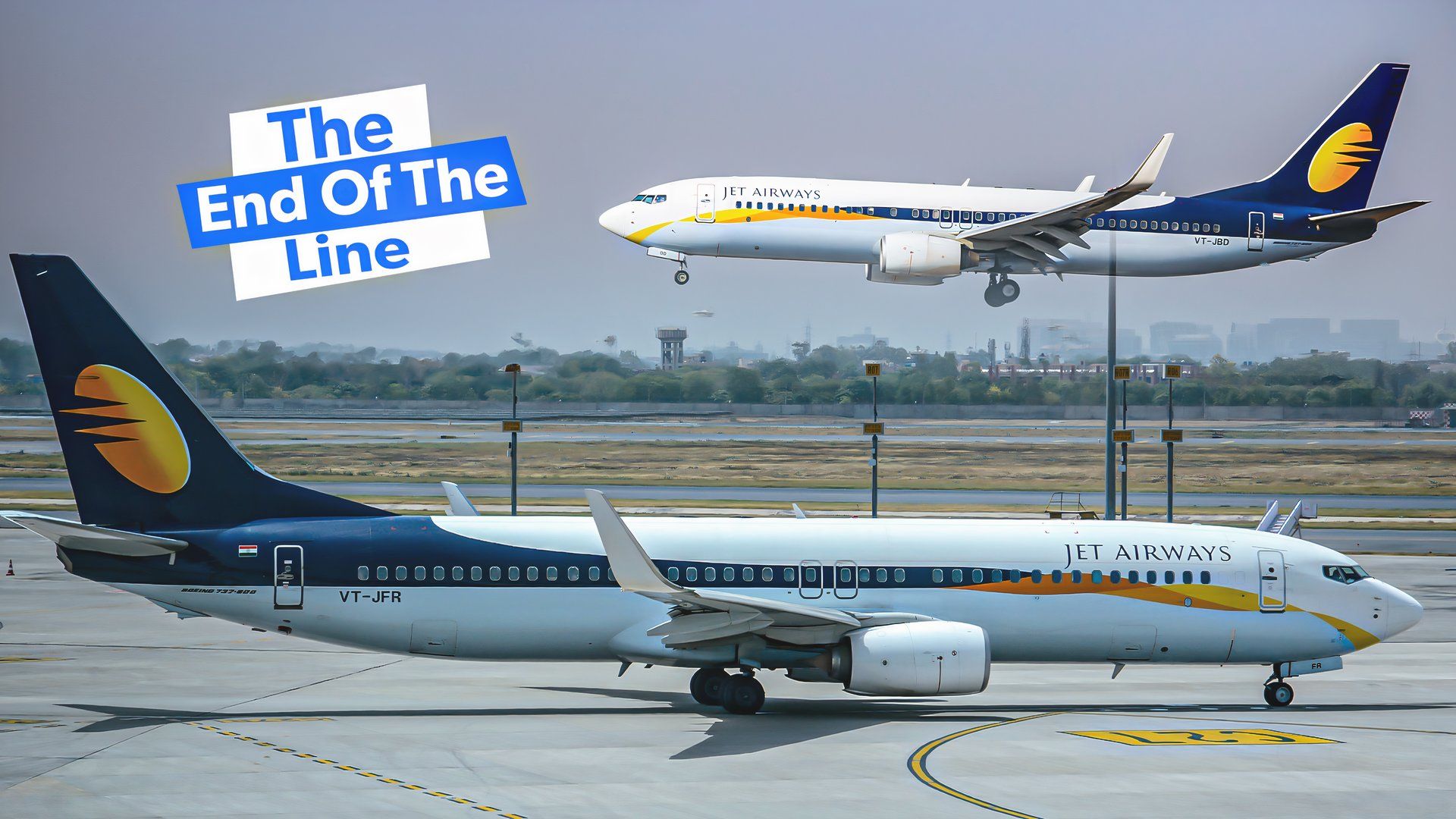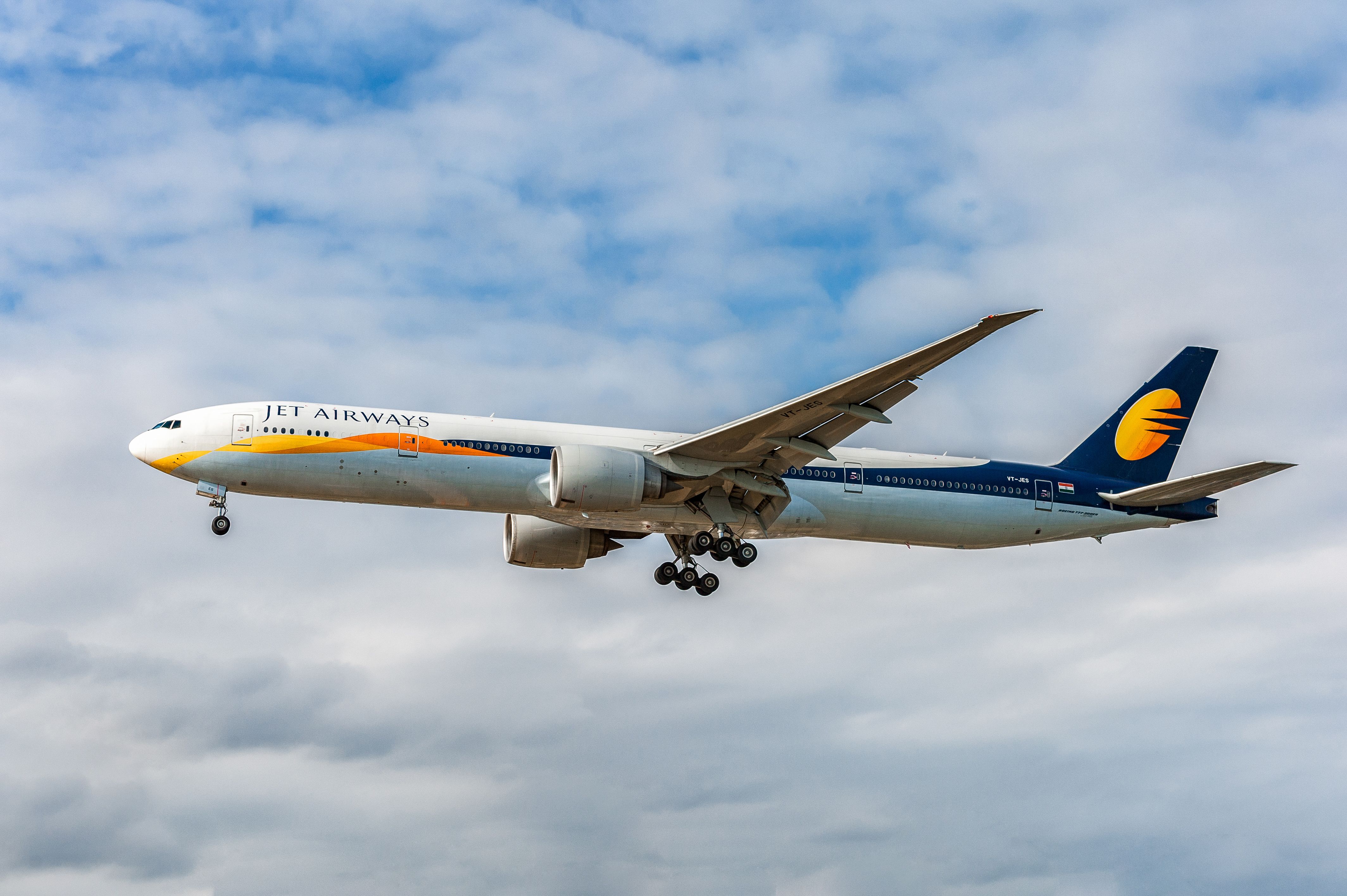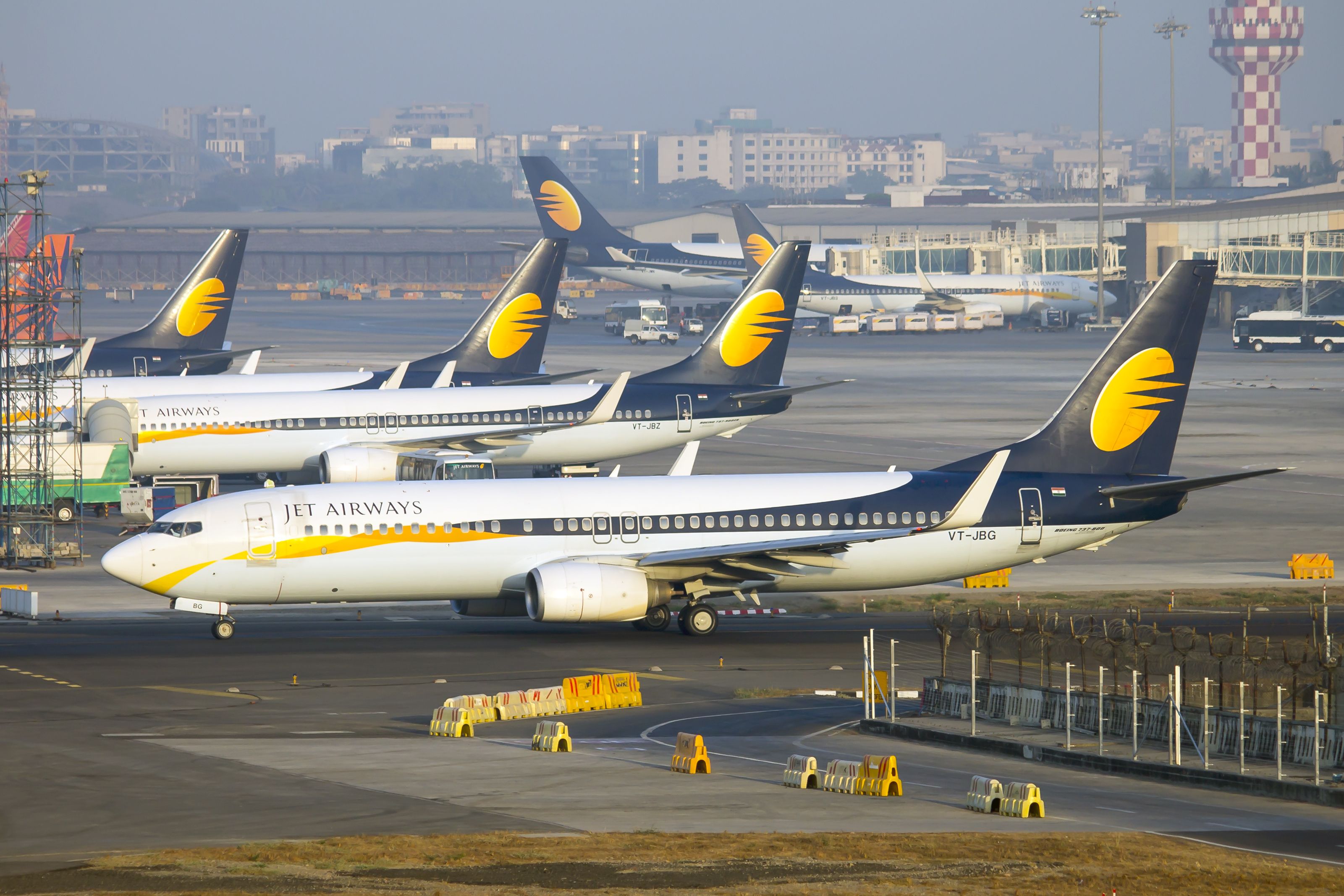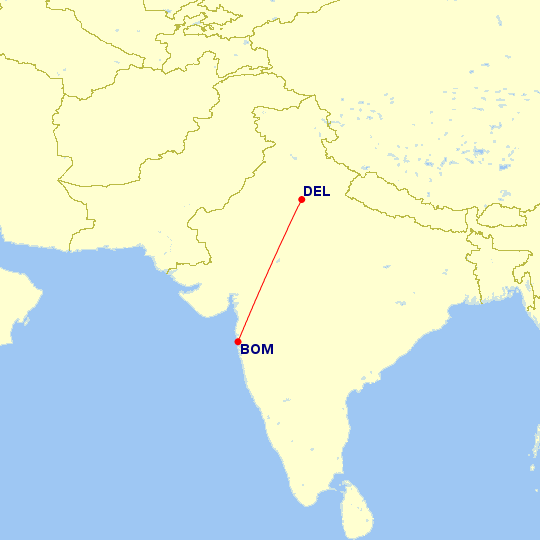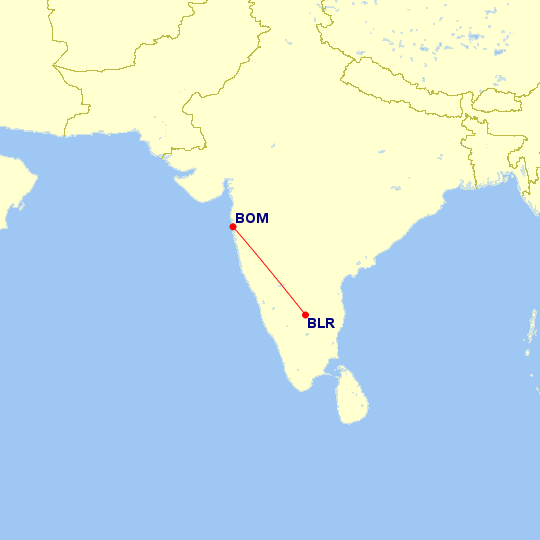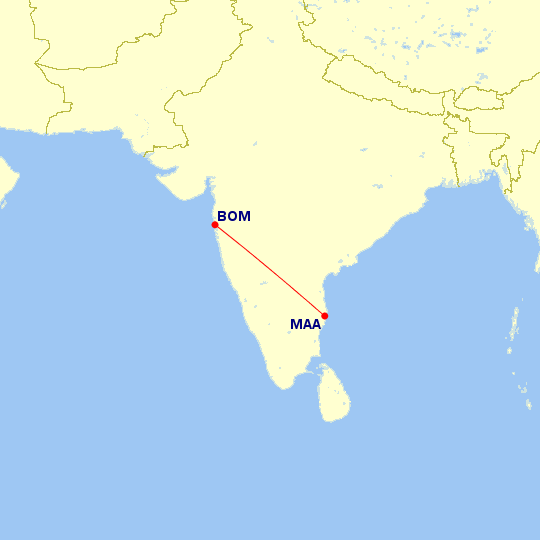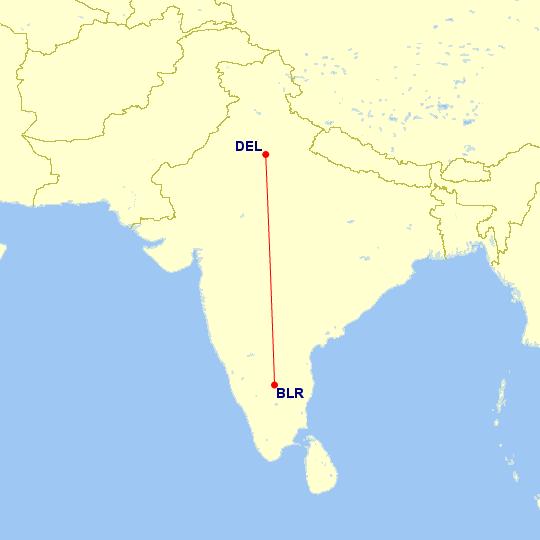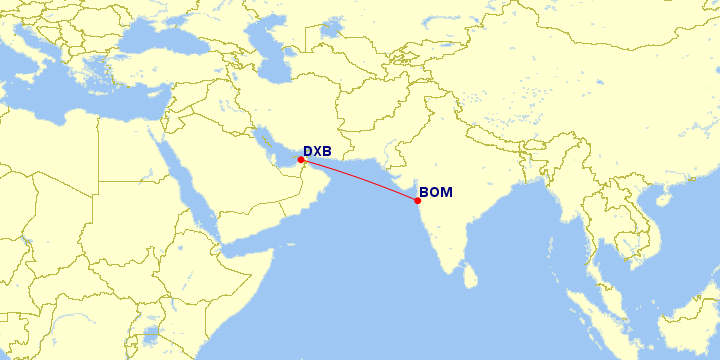Summary
- Jet Airways, founded in 1993 by Naresh Goyal, was once one of India’s largest airlines.
- Unfortunately, poor decisions led to financial trouble and suspension of operations in 2019.
- The Jalan Kalrock Consortium hopes to relaunch the airline by the end of this year, althugh many hurdles remain.
Jet Airways, India’s oldest private airline, was founded by Naresh Goyal in 1993. The airline grew rapidly in its early years, reaching its peak in 2016 with over 300 daily flights to 74 destinations.
However, poor financial decisions and unfavorable market conditions led to Jet Airways’ eventual downfall. By early 2019, the airline’s financial woes forced it to ground over 100 planes and cease most operations, culminating in the suspension of flights in April 2019.
In Jet Airways’ final months, the busiest routes connected principal Indian cities, such as Mumbai (BOM), Delhi (DEL), Bangalore (BLR), and Chennai (MAA). The airline also operated one international route to Dubai (DBX) in Janurary 2019. The Jalan Kalrock Consortium is now attempting to revive the airline, aiming for a potential relaunch in 2024.
Jet Airways: The rise and fall
Jet Airways, India’s oldest private airline, has some of the humblest origins in the industry. The airline’s founder, Naresh Goyal, began his entrepreneurial journey working as a cashier in his uncle’s travel company. Later, as a general sales agent, Goyal made connections with airline executives worldwide, laying the groundwork for his eventual venture.
In 1993, Goyal launched his new company, Jet Airways, as an air taxi service operator. In 1995, the airline began full operations, offering domestic flights throughout India. Jet Airways launched its international operations in 2004 with a Chennai (MAA)–Colombo (CMB) route.
Jet Airways continued to proliferate, and in 2007, the airline acquired Air Sahara. By February 2016, Jet Airways was operating over 300 daily flights to 74 destinations worldwide from its main hub in Mumbai (BOM) and secondary hubs in Chennai (MAA), New Delhi (DEL), Bangalore (BLR), Kochi (COK), and Kolkata (CCU).
Unfortunately, due to market changes and poor decisions by Jet Airways’ leadership, the airline soon found itself in serious trouble. While many factors contributed to Jet Airways’ ultimate demise, many experts agree that the blame falls primarily on Goyal himself.
According to The Economic Times, Goyal made many poor financial decisions during his time in Jet Airways’ leadership, possibly even committing fraud. One notable mistake was his decision to buy a mixed widebody fleet of Airbus A330s and Boeing 777s in 2012-2013.
Not only was the airline unable to sustain the operating costs of these aircraft, but Goyal also made impractical decisions regarding their configuration. Instead of maximizing the passenger seating on these widebody aircraft, Goyal wanted them to be “like palaces,” according to Open. To accomplish this goal, Goyal had the aircraft fitted with nearly 100 fewer seats than the standard configuration.
Jet Airways executives claimed that this decision lost the airline a fourth of the potential revenue from the aircraft. Although Goyal was finally convinced to increase the seat count, he insisted on retaining the eight first class seats—even when data showed they were not earning any profits in the long run.
Jet Airways began its final downfall in March 2018. According to Business Standard, the airline’s limited funds forced it to delay employee salary payments and enact a 25% pay cut for upper management.
The final months
Between January and March 2019, Jet Airways declined rapidly. Per ch-aviation, the airline was forced to ground more than 100 planes and drop most of its routes. The former leader of the Indian skies was reduced to a fleet of just five aircraft.
By April, Jet Airways had completely depleted its cash funds and was unable to secure help from any banks. Not only was the airline unable to offer additional collateral for loans, but it had defaulted on several payments and hadn’t paid its employees in four months.
After 26 years of operations, Jet Airways decided to suspend its flights indefinitely. The last Jet Airways flight was from Amritsar (ATQ) to Mumbai (BOM) on April 17, 2019.
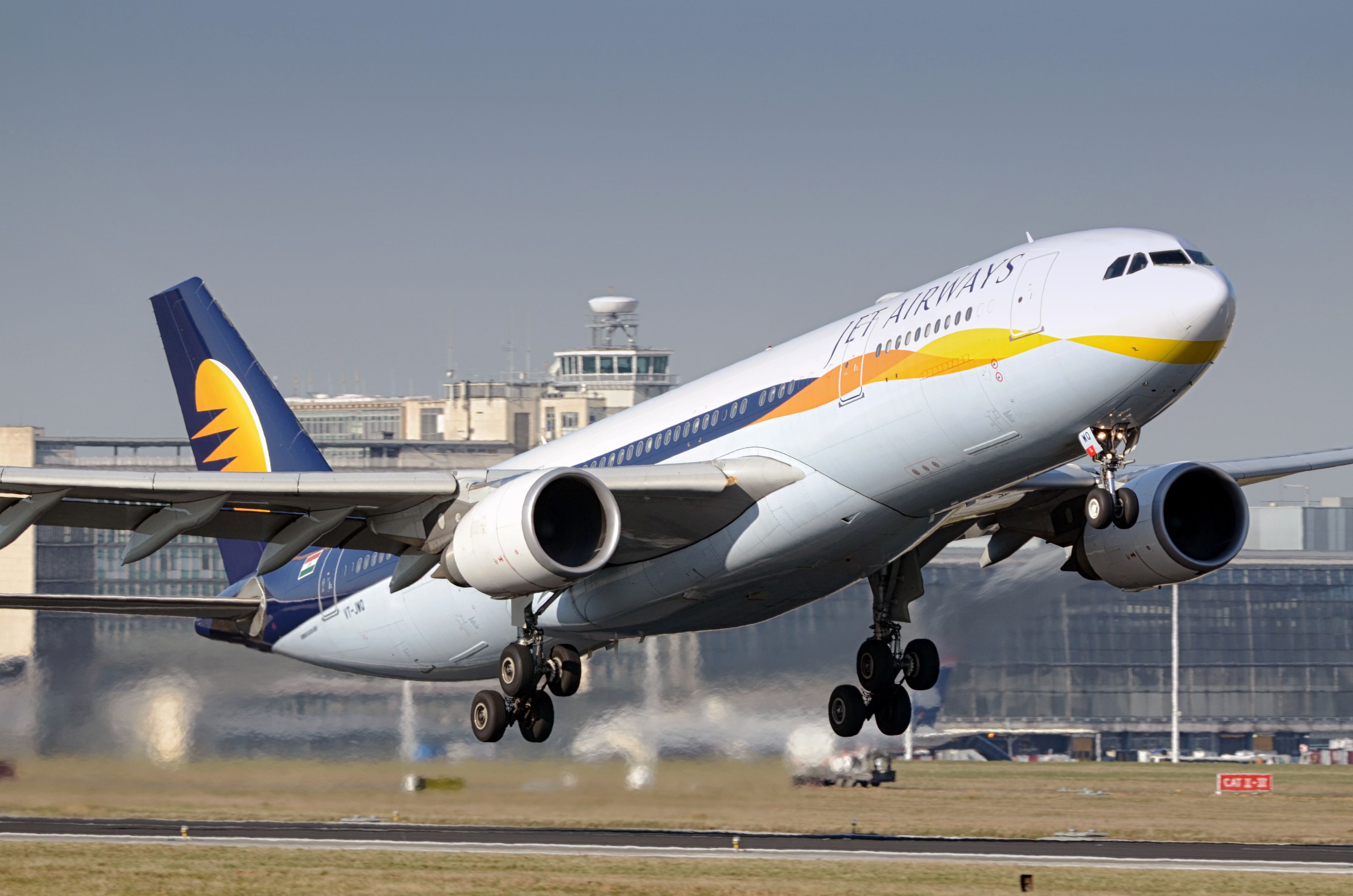
Related
Why Indian Airlines Struggle To Be Successful
India has already lost two important airlines in the last few years, namely Go First and Jet Airways.
Top route: BOM–DEL
In its final three months of service, Jet Airways operated a reduced fleet of Boeing 737s that only covered a select few routes. The top route during this period was between Mumbai (BOM) and New Delhi (DEL).
According to Cirium, an aviation analytics company, Jet Airways operated 731 flights between the cities in January 2019, 578 flights in February, and 595 flights in February. The approximately 705-mile (1,135 km) journey had an average flight time of around two hours.
Today, several other Indian airlines cover the vacancy left by Jet Airways on this route. The leading carriers operating in the BOM–DEL corridor today are:
Second place: BOM–BLR
The second-most operated route during Jet Airways’ final months was between Mumbai (BOM) and Bangalore (BLR). In January 2019, the airline operated 593 flights in the corridor. In February, only 485 flights connected the two cities, and March saw just 420 flights.
Today, Air India is the largest carrier operating between Mumbai and Bangalore. Other airlines in the corridor include:
- Vistara
- IndiGo
- Cathay Pacific
Third place: BOM–MAA
The third-most operated Jet Airways route in 2019 connected Mumbai (BOM) and Chennai (MAA). This route only received service in January (278 flights each way) and February (215 flights each way). By March, Jet Airways had deemed the route unprofitable enough to cut.
Since Jet Airways’ absence, several carriers have stepped up to provide service between India’s east and west coasts. Today, the leading airlines on this route include:
- IndiGo
- Air India
- SpiceJet
Fourth place: DEL–BLR
Jet Airways’ fourth-place route in 2019 was only operated through January. During its final month, the corridor between New Delhi (DEL) and Bangalore (BLR) received 213 flights each way (426 total).
Today, several airlines operate this route connecting north and south India. According to Flightradar24, Air India and IndiGo are the leading operators between DEL and BLR.
Fifth place: BOM–DXB
The final route flown by Jet Airways in its last months of operation is the only international route. The airline flew 213 flights each way between Mumbai (BOM) and Dubai (DXB) in January 2019.
Today, this is a very popular route covered by several airlines. Some of the leading operators include:
- Air India
- SpiceJet
- Emirates
Rebirth of Jet Airways?
After Jet Airways collapsed in 2019, the Jalan Kalrock Consortium purchased the carrier with the goal of reinstating it to its former glory. The initial plan was to relaunch in 2022, before Jet Airways’ Air Operator’s Certificate (AOC) expired in May 2023.
Although this original attempt was unsuccessful, the Jalan Kalrock Consortium managed to renew Jet Airways’ AOC in August last year. Additionally, the Consortium supplied over $42 million to the airline, hoping to further its plans to re-commence flight operations by the end of this year.
Although an official launch date has not been set, the Jalan Kalrock Consortium has remained confident in their plans moving forward. Per Aviation Week, a Jalan Kalrock representative said:
“The consortium’s strategy to revive the airline remains unaltered. The new promoters are determined to reestablish the operations of the airline up and running in 2024.”
Despite this confidence, many hurdles remain before the defunct airline will be able to take to the skies again. If the Jalan Kalrock Consortium is successful in its venture, Jet Airways would be the first Indian airline to come back after ceasing all operations.
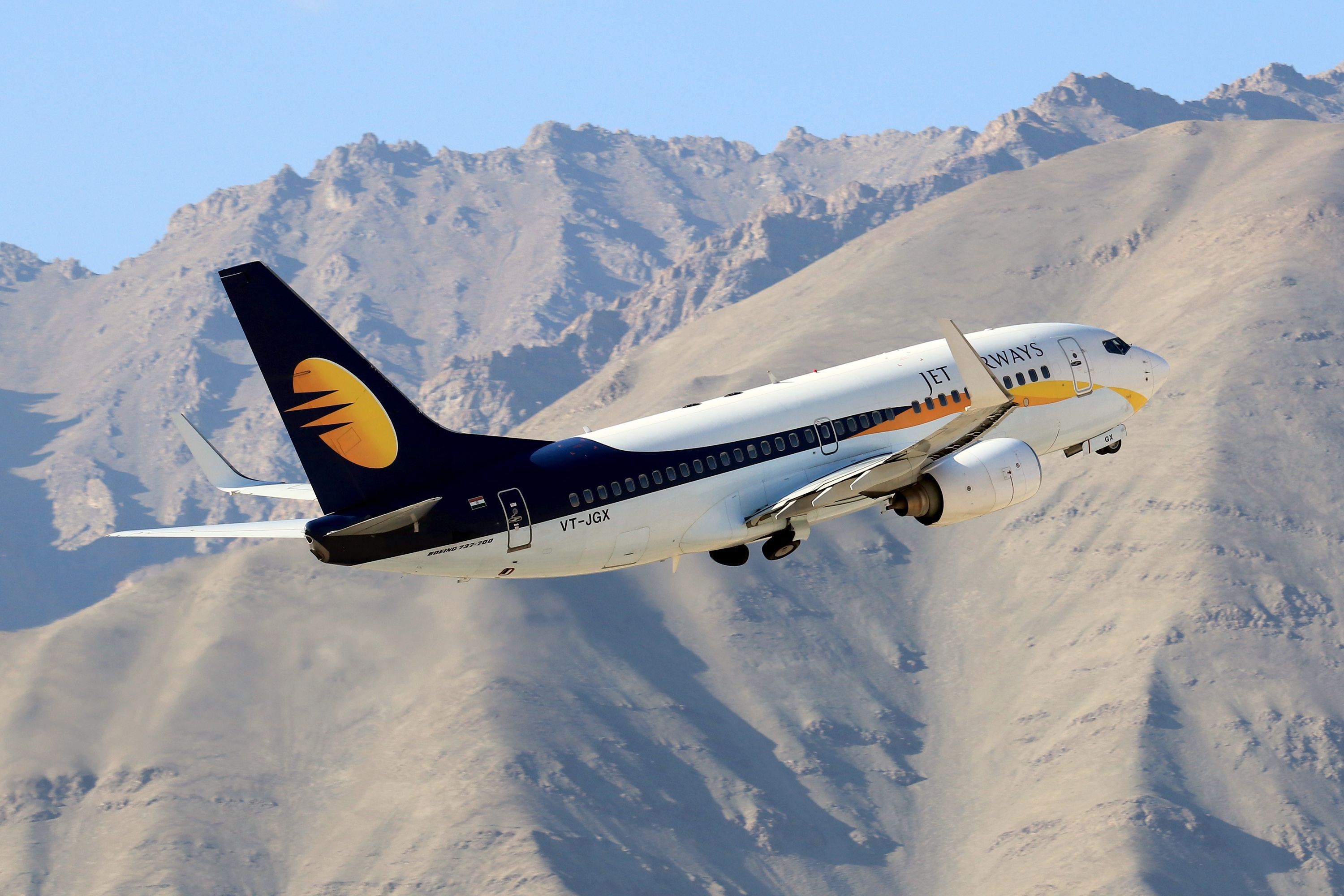
Related
Jet Airways Consortium Ordered To Pay $18 Million By End Of January
Jet Airways may never take flight if the consortium doesn’t pay up.

